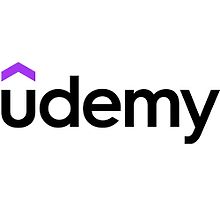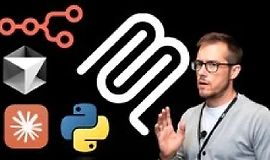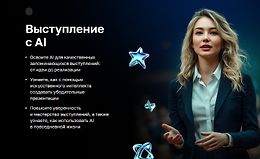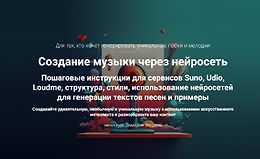Протокол контекста модели (Model Context Protocol, MCP) — одна из самых захватывающих новых технологий в автоматизации ИИ и разработке агентов.
Большим языковым моделям недостаточно одних лишь промптов — им нужны контекст, инструменты и внешние ресурсы. MCP позволяет дать всё это. Но как это работает на практике? Как построить собственные MCP-сервера? Как использовать клиентов вроде Claude Desktop, Cursor, Windsurf, n8n или Flowise? И каким образом автоматизировать, защитить и интегрировать всё это в собственный AI-проект?
На этом курсе вы получите пошаговые объяснения с множеством примеров и готовыми рабочими процессами.
Основы: понимание и использование MCP
Вы разберётесь в концепции MCP, принципах его работы и сферах применения. Узнаете, как с помощью MCP подключать к LLM-моделям вроде Claude, GPT или Gemini инструменты, промпты и ресурсы. Изучите основы инженерии промптов и работу системных промптов в контексте MCP. Получите практические материалы и доступ к хабу курса с полезными ресурсами.
Интеграция MCP в Claude Desktop и запуск первых серверов
Вы установите Claude Desktop через Node.js и NVM, настроите серверные структуры, научитесь подключать инструменты, базы данных и собственные API через JSON-файлы и официальный инсталлятор MCP. Освоите различные типы серверов — инструментальные, промпт-сервера, базы данных. Подключите Claude Desktop к локальной системе или онлайн-сервисам с API-ключами, установите Python с помощью pyenv и запустите первый локальный MCP-сервер.
MCP вместе с Cursor, Vibe Coding и Python
Вы научитесь использовать Cursor как гибкий клиент, подключать его к существующим MCP-серверам (например, Zapier), разберётесь с ограничениями и преимуществами. С помощью Vibe Coding и Python-конфигураций сможете настраивать структуру MCP под себя, управлять API-ключами, понимать ценообразование и строить кросс-интеграции.
Создание, хостинг и автоматизация MCP-серверов с n8n
Вы узнаете, как установить и настроить n8n, использовать его как полноценную платформу MCP, создавать триггеры и действия, подключать Claude, Cursor, GitHub или Google Drive, интегрировать векторные базы данных вроде Pinecone для RAG-агентов. Научитесь разворачивать MCP-сервера на VPS, держать их в работе 24/7, применять аутентификацию и стратегии безопасного хостинга в соответствии с GDPR.
MCP в Flowise, LangChain и LangGraph
Вы установите Flowise, создадите сложные цепочки инструментов (почта, календари, Airtable, веб-поиск) на Agent V2, освоите LangGraph для управления многошаговыми процессами агентов с разделением ролей. Научитесь комбинировать функционал LangChain, управлять базами данных через SQLite и строить масштабируемую автоматизацию.
Творческие проекты и специализированные сценарии
Вы сможете создавать голосовые интерфейсы для LLM, автоматизировать 3D-рабочие процессы в Blender с помощью Claude и Python, генерировать изображения через OpenAI API и n8n, а также исследовать креативные применения MCP в сообществе.
Разработка MCP-серверов на Python
Вы научитесь писать MCP-сервера на Python и TypeScript, обрабатывать промпты, подключать инструменты и ресурсы с помощью Python SDK, использовать MCP Inspector для диагностики, работать с Server-Sent Events, STDIO и HTTP. Узнаете, как публиковать серверы на GitHub и хостить их на Cloudflare, AWS или Azure, избегая распространённых ошибок.
Безопасность, конфиденциальность и правовые основы
Вы научитесь защищать MCP-сервера от таких угроз, как отравление инструментов, jailbreak-атаки или инъекции промптов. Разберётесь с требованиями GDPR и закона ЕС об ИИ, а также получите практические рекомендации для соблюдения технической и юридической безопасности.
После курса…
Вы сможете создавать, разворачивать и интегрировать MCP-агентов в Claude, n8n, Cursor или Flowise, строить защищённые MCP-сервера и даже предлагать их как услугу.
Для кого этот курс
Для разработчиков AI, инженеров-энтузиастов и специалистов по автоматизации, которые хотят понять MCP, создавать собственные серверы и расширять клиентов вроде Claude, Cursor, n8n или Flowise. Для всех, кто хочет освоить расширение LLM с помощью инструментов, промптов и ресурсов. Для предпринимателей и фрилансеров, желающих автоматизировать бизнес-процессы или построить собственные AI-сервисы. Для разработчиков и prompt-инженеров, работающих с API LLM и интеграциями. Для технически подкованных новичков, которые хотят глубже погрузиться в экосистему MCP.
















































































































































































